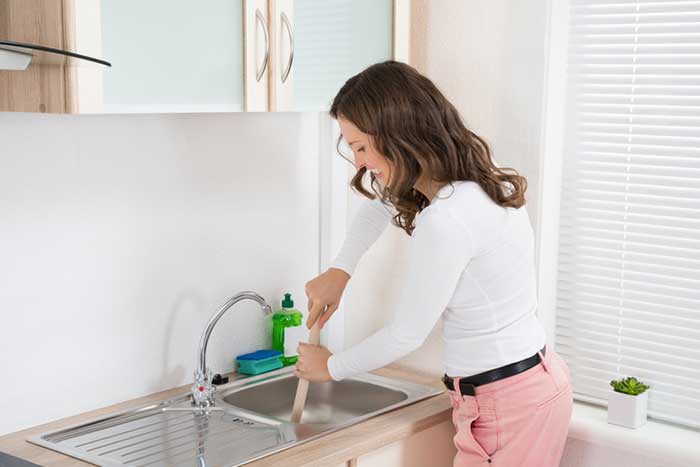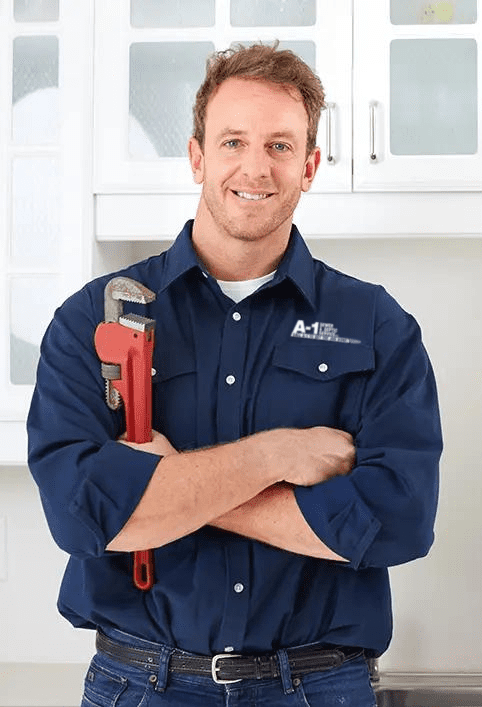.
.
Clogged drains are a common problem, but they can often be resolved without calling in a professional. Moreover, you don’t need to use toxic chemicals to clear your clog. With a bit of patience and some tried and true methods, you can often unclog your drain by yourself in a reasonably short amount of time.
.
How To Unclog a Drain with Septic System
.
To unclog a clogged drain with a septic system, it’s important to be able to identify there is a septic tank clogged drain or pipe. Since the septic tank is an underground storage tank that holds the waste and toilet paper that is flushed from your home and into the drain field, it’s reasonable for clogs to occur. The pipe leading from your house to the septic system is a main drain line prone to many clogs or even damages. Some of the most common symptoms in identifying a clogged mainline include:
- Foul Smell/Odor from Drains
- Slow Drains for sinks/tubs
- Gurgling noises from toilets and drains.
.
These identifiers help homeowners know when there is a problem with the main drain that needs to be taken care of. Once the problem has been identified with the main drain, and it’s not an issue that is affecting the draining system, or septic tank system, then there are ways to resolve the clog without the use of professional help.
.
If you are a homeowner with household plumbing experience, knowledge, and confidence, here’s a DIY step-by-step guide to mitigating the clogged mainline.
.
Step 1: Natural, nonchemical drain solution:
It’s crucial not to pour any chemical drain cleaners down the drain. Utilize natural resources such as baking soda and vinegar solution. Baking soda will act as the cleaning agent that will work to dissolve the clog, and the vinegar will refresh the drain of the foul order and eliminate any grease.
.
You will want to apply ⅓ cup of baking soda into the drain, followed by ⅓ cup of vinegar. You can choose to mix them together before downing them in the drain line. Then let the solution work for an hour before pouring hot water.
.
Step 2: Pour Hot Water Into the Maindrain
Hot water will help the movement of the baking soda and vinegar solution and loosen and obstructing elements within the drain. Pour as much hot water into the drain as you can.
.
Step 3: Get a Plumbing Auger and Use a Drain Snake
You can rent a plumbing auger that reaches nearly 80 meters down your main drain and rotates a tool that effectively clears clogged pipes. You’ll want to use the drain snake by inserting it into the drain until you feel an obstruction. Once the clog is found, use the auger to rotate and clear it out.
.
Step 4: Know When to Contact a Professional Plumber
Not every homeowner can DIY a clogged main drain, especially if a septic system is involved. Know your limit and capabilities regarding DIY unclogging, and rely on the professionals. Call A-1 Sewer and Septic Service to unclog your main drain and guarantee a cleared drain all the way to your septic tank.
.
Unclogging a Drain With a Septic System
.
Suppose you are a homeowner with a septic tank. In that case, there may be other considerations you need to look at when removing blockages in your septic system so that backup doesn’t negatively affect your septic tank or cause issues with septic tank pumping or solid wastes in the septic tank. Here are some DIY ways to unclog a drain if you have a septic system before calling professionals in the first place.
.
- Try to physically remove what’s causing the problem. One common cause of clogs is hair collected around a pop-up stopper or strainer. You may be able to perform drain cleaning and remove the hair and clear the drain clog, or you might be able to use a drain stick to clear clogs in the drain pipe caused by hair in a P-trap or an S-trap. Cleaning a sink trap can remove clogs caused by buildup or a foreign object, a plunger can clear clogs that aren’t too far into the pipes, and a plumbing snake can clear deep blockages.
- A chemical drain cleaner can break up stubborn clogs. Choose a product suitable for your septic system and the type of pipes you have. For instance, if you have a septic system, ensure the drain cleaner is septic-safe. Do not just use a chemical cleaner like Bleach without any research. Chemicals could ruin your plumbing system and other areas if not used properly. If you’re unsure if a chemical drain cleaner is safe for your system, just know never to mix drain cleaners, and don’t use drain opening tools after using a drain cleaner. Because the chemicals in drain cleaners are harsh chemicals and can have chemical reactions, be careful not to let them come into contact with finished fixtures like faucets, stoppers, or drain trim.
- A less toxic alternative is a natural drain cleaner. Aside from being gentler on your pipes and features, natural drain cleaners are less likely to impact the environment than chemical drain cleaners negatively, utilizing specific enzymes or other septic-safe drain cleaners.
- DIY Drain Cleaner: Put ½ cup baking soda into your drain, ensuring it all goes down. Pour ½ cup white vinegar into the drain, covering it immediately with a stopper or rag, so the bubbles stay in the drain. Wait 2 minutes and pour another ½ cup of vinegar into the drain, again stopping it with a rag or stopper. Wait 15-30 minutes, then pour a gallon of boiling water down the drain. You may have to repeat the process for a stubborn clog.
- Dish Soap and Hot Water: This is especially good if the clog is caused by grease. Just squirt a good amount of soap down the drain, following it with a pot full of boiling water.
- Hydrogen Peroxide: Mix a cup of hydrogen peroxide with one tablespoon of baking soda, and pour it down the drain. Let it foam, and the chemical reaction takes place, and it should break up the clog and clear the sink drain/shower drains, kitchen drains, and more.
- Prevention is the best cure. Never pour coffee grounds, grease, or anything else that can solidify or clump into a sink or drain line. If you use a garbage disposal, run plenty of cold water to flush down food particles. Frequently clean pop-up stoppers and strainers, and consider using a treatment designed to reduce buildup and corrosion in pipes. This will help prevent slow drains, gurgling, and the need for a plumber’s snake/auger.
.
There is no best way to clear a clogged drain. Because there are different reasons for a drain to be clogged. Your plumbing system is one of your home’s most critical moving parts. It’s crucial to take care of it as much as possible, whether taking advantage of helpful drain cleaning tips or calling on a professional plumbing service to handle all your plumbing needs.
.
When You Need a Professional Plumber’s Help
If you can’t clear the clog, whether in your kitchen sink, main line, wastewater line, or plumbing system, it may be time to call in the professionals at A-1 Sewer and Septic Service. Having served the residents of the Kansas City Metro Area since 1968, we’ve earned a reputation for efficient service at affordable, up-front prices. We’re available on your schedule and offer same-day and weekend service. Give us a call at 913-631-5201, or reach us through the Contact Us page on our website.




